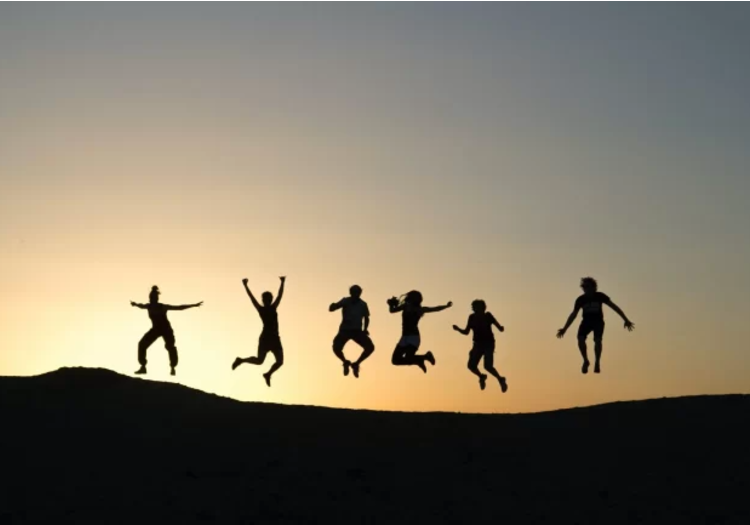Burnout. Turnover. The Great Resignation. Labor shortages. A common thread across all of these issues is low employee morale. The good news is there is a solution—an answer that’s more effective, more fun, and less costly than big pay increases: team building activities to boost morale.
Team building turbocharges morale because it’s interactive, engaging, reconnective, and it plants seeds for building new relationships.
Many companies hire employees on a full-time remote basis, a trend that began during the pandemic and has continued in the years since. As a result, many of these employees have never actually met most of their coworkers (other than perhaps as a video image in a Zoom box). And many long-time employees who shifted to remote work have had limited in-person interactions with their colleagues.
The fun team building programs we’ve delivered lately, whether they’re charity-focused or competitive events, have reunited people. Face-to-face is exciting. It’s rejuvenating. It’s folks getting to see and associate with coworkers in three dimensions again, even if their jobs have been mostly remote for the past few years.
How Team Building Impacts Employee Morale
Team Building Reunites and Strengthens Team Connections
At one of our recent live team building events, 20% of the client’s workforce was hired during COVID. This was the first time they were ever meeting their other coworkers in person. The longer-term employees were also thrilled to finally get together live again.
But team building isn’t just about reconnecting, as crucial as that is in boosting morale. It also provides the opportunity to meet in a non-work setting and solve fun problems, engaging with each other in collaborative and unifying ways.
When professional facilitation, the right venue, and a clear purpose—whether team building or team building with charity—are brought together, people have fun and feel good about benefiting their community.
Team Building Fosters Purpose Beyond a Paycheck
Many employees today are rethinking where they work and why they work there. That’s part of The Great Resignation; workers are asking, what am I getting besides a paycheck? Why am I working so hard? Do I believe in what I’m doing and where I’m going, personally and professionally?
When people see that their organizations are willing to re-engage in a team-building program and reach out to the community, that says something to them about the company they work with and the corporate culture.
And people are taking a hard look at that element of culture. Is it just to work us as hard as possible to maximize the bottom line…or is it more than that? Do they care about me, my personal and professional growth, about giving me the opportunity for continued education within the organization? Are they reaching out to the community and showing who they are as a company? And do I believe in that?
And if so, how important is it for me to be involved in a program where we’re not only thinking about what’s happening within the organization, but we’re benefiting the community around us? That electrifies morale.
It makes employees feel more connected to the organization, believe that leadership cares about their professional growth, and show it with continued workshops and the opportunity to be coached by people within the organization to help them move up the ladder.
Combining fun collaboration with professional interpersonal skills development and community service is tremendous for boosting morale. It gives employees a reason to work and to stay beyond just getting a paycheck.
Team Building Supports Mental Health and Well-Being
Much has been written about the pandemic’s toll on mental health. The mix of fear, anxiety, isolation, a sense of loss, and frustration has many employees reassessing where and why they work.
People have been through a lot. They feel the need to get together and reconnect. To help employees improve their mental health and re-establish their connections—to each other and to the organization—companies are using team building programs to bring workers together to collaborate in an environment that’s high on fun and creativity and virtually stress-free.
Study after study shows that laughter, fun, and engagement are good for mental and physical health. Laughing is good for your blood pressure, your diaphragm, your face, and your brain. To have fun and interact in an engaging way with colleagues is more vital than ever, especially as many teams navigate hybrid or remote work arrangements.
The Key to Boosting Morale with Team Building Ideas
Every team building program incorporates fundamental pillars: communication, collaboration, problem-solving, and leadership. In today’s environment, they provide the added benefit of improving morale through healthy re-engagement.
Many activities also involve fun competition. The winners may receive certificates, medals, or gift cards. But the value, for both participants and the organization, comes from the shared experience.
Though in-person events have the greatest impact, virtual get-togethers can also help improve morale. They still engage people. Virtual options include everything from professional development (presentation skills, meeting management, time management) to outright fun with challenges like escape rooms. Virtual game shows and virtual trivia contests still provide learning, and when company content is added to the mix, the game can become even more relevant to the organization.
Organizing team building activities to boost morale, whether live or virtual, can re-energize employee morale by bringing people together, enhance their connection with each other and the organization, and improve mental health. Again, as noted here previously, there’s only one bad choice when it comes to team building, which is to do nothing at all.
If you’re ready to boost your team’s morale and engagement through impactful team building activities, get a quote today and see how we can help energize your workplace.


